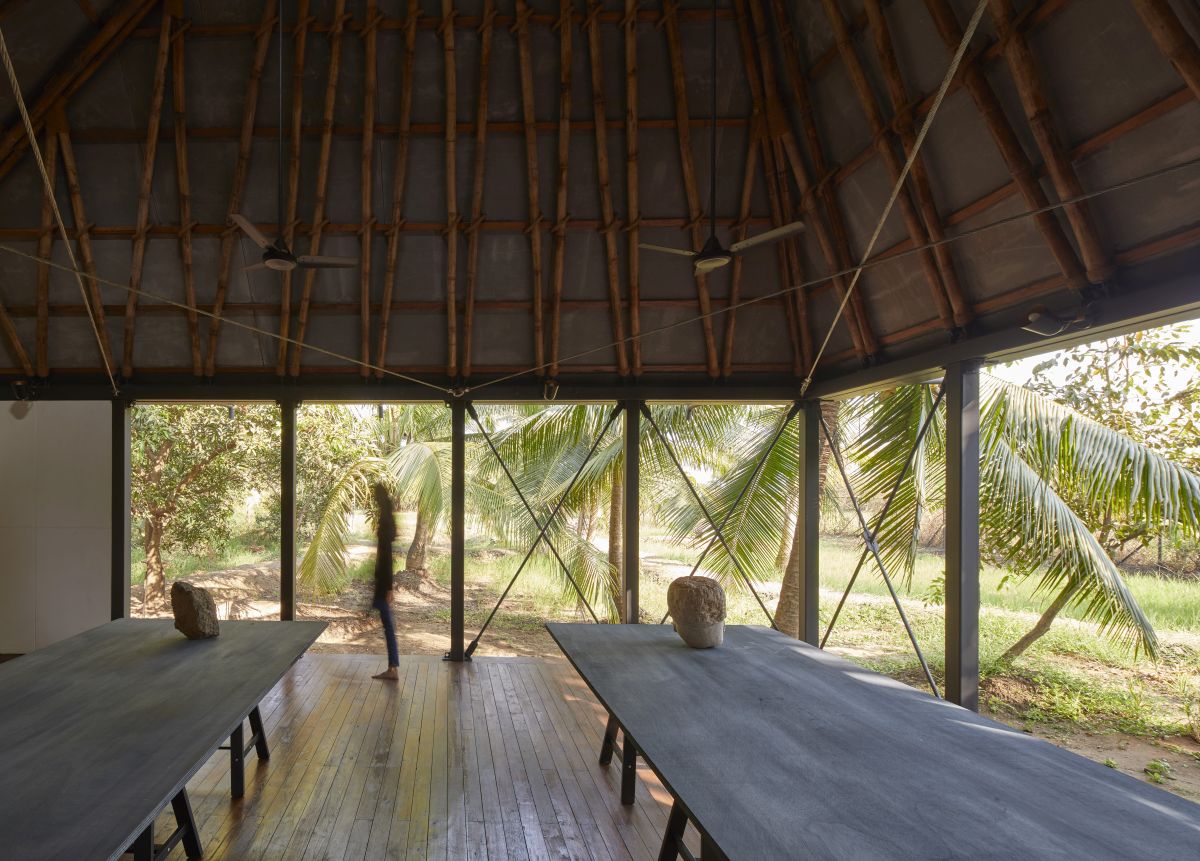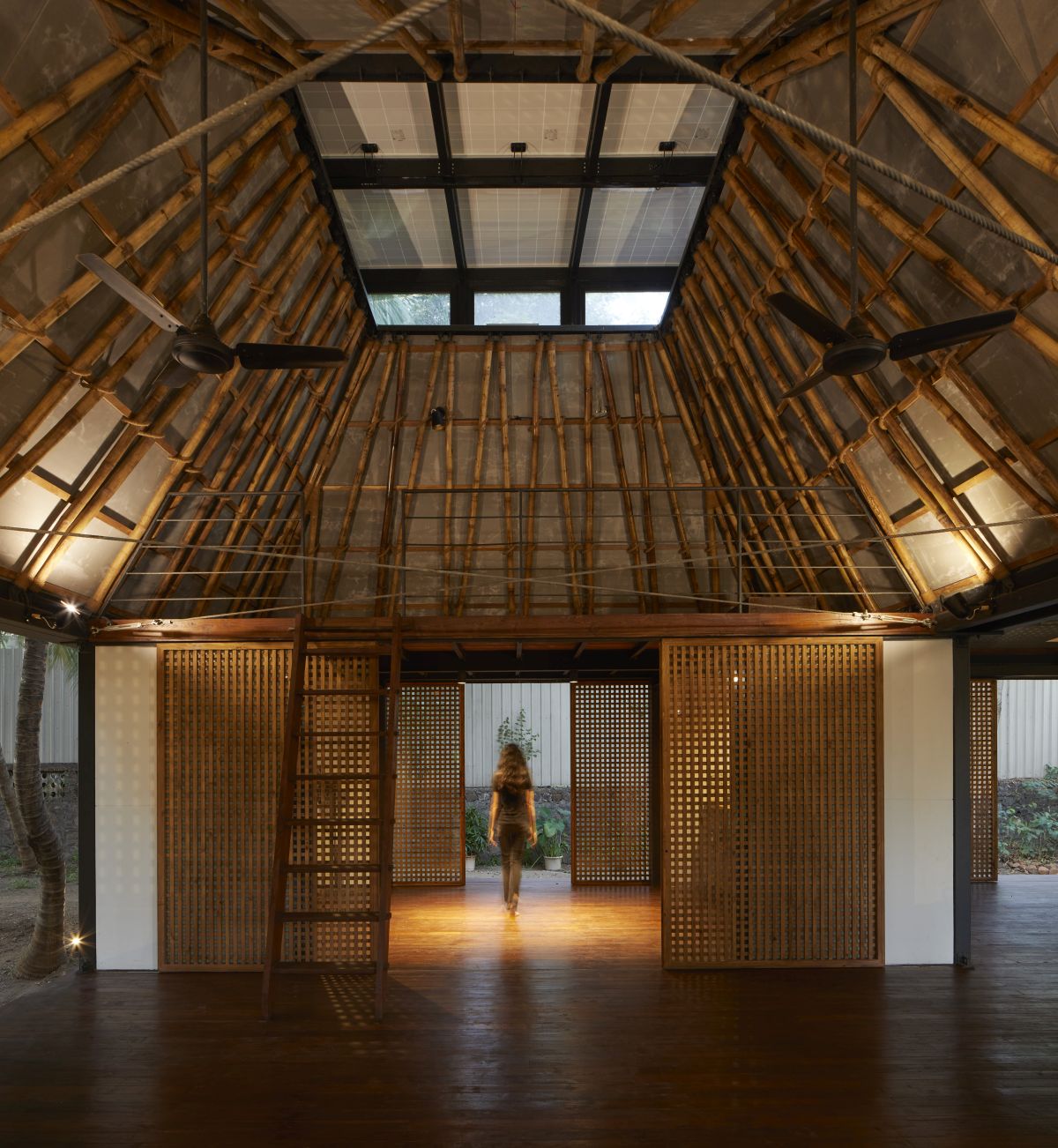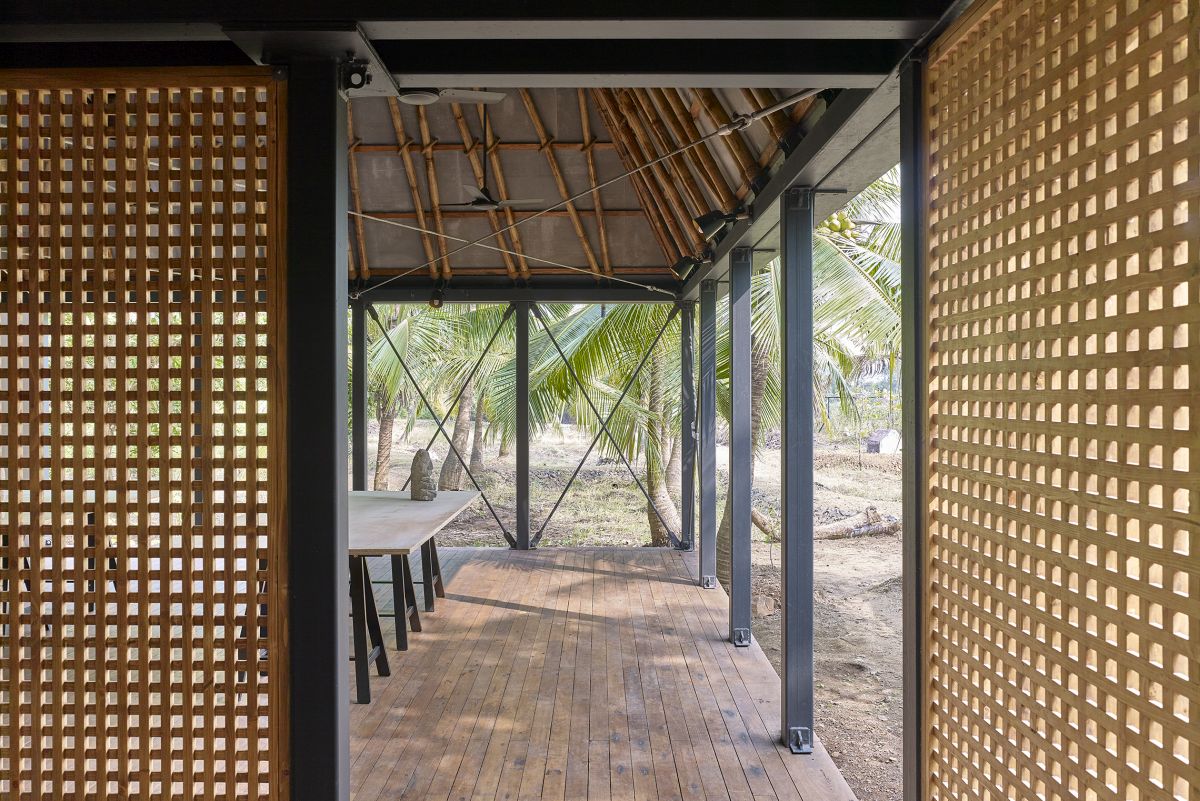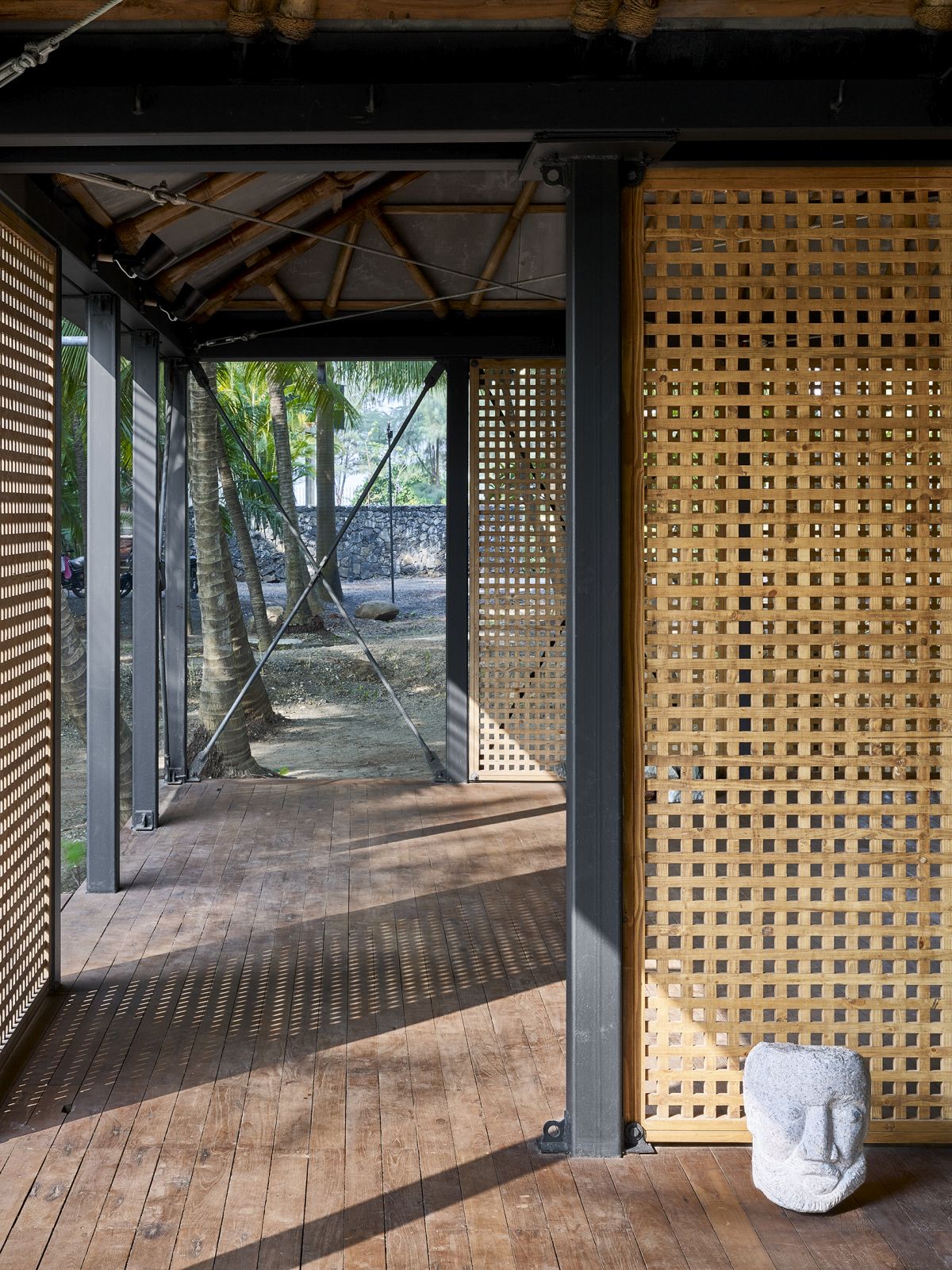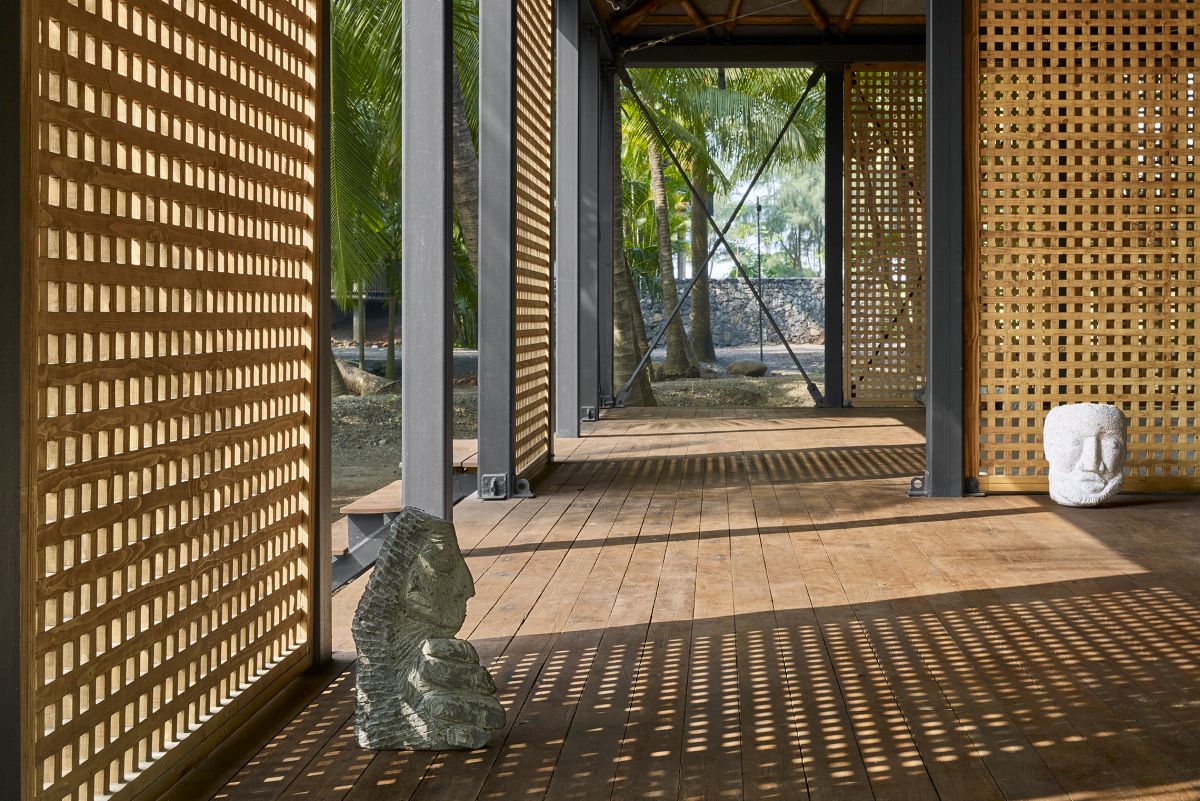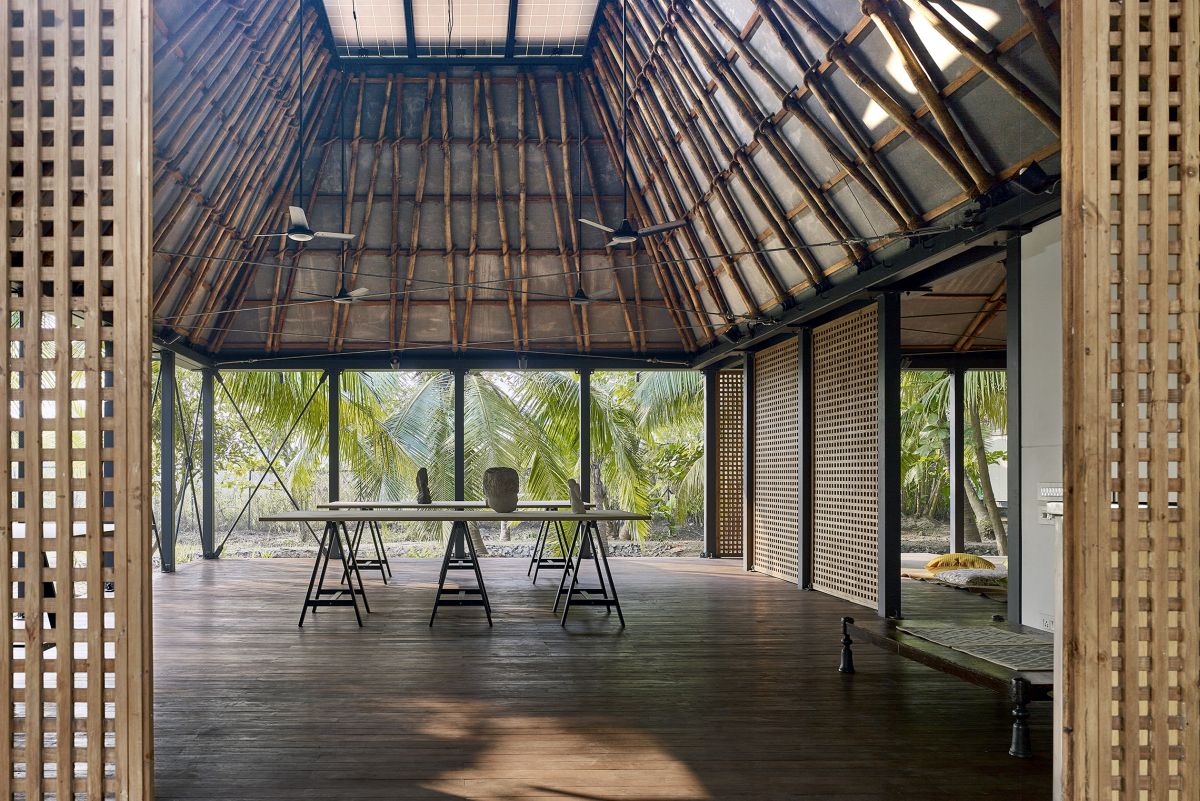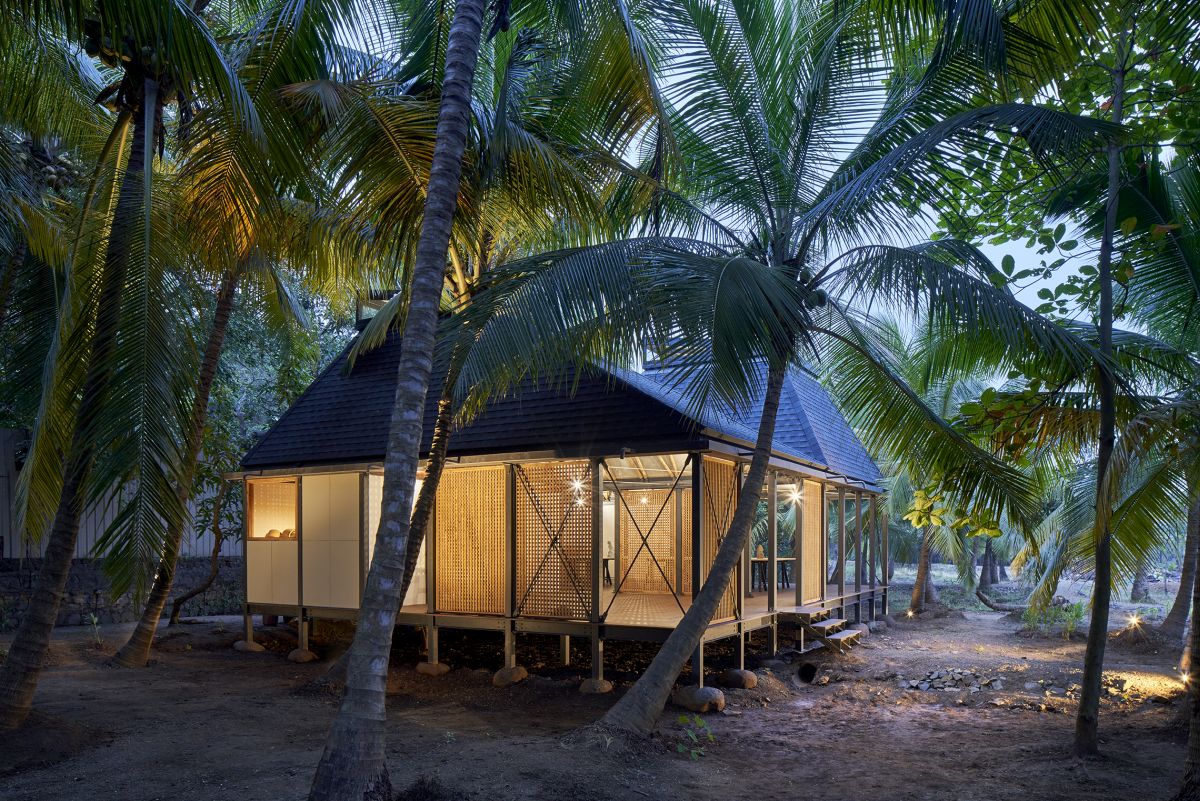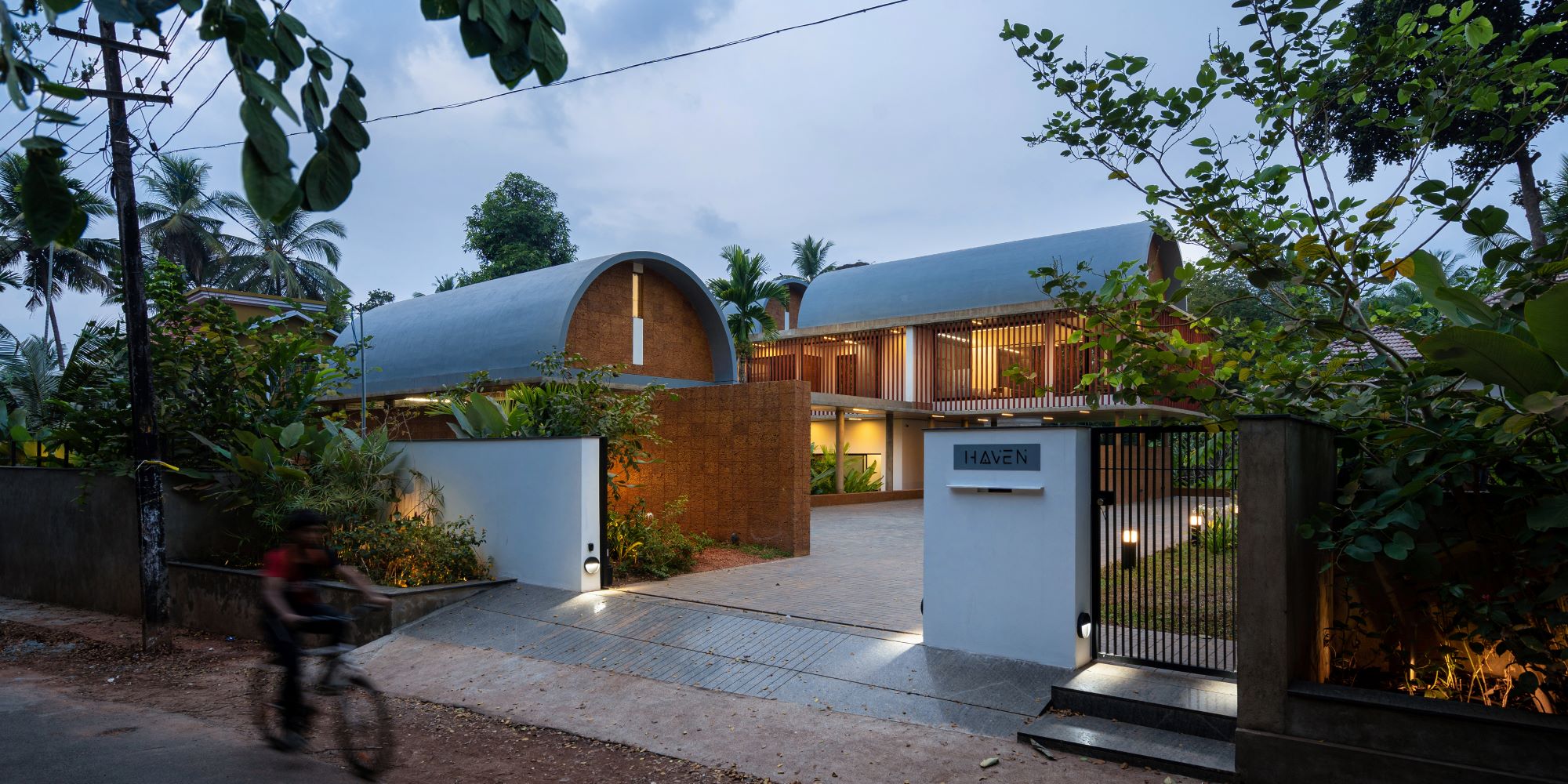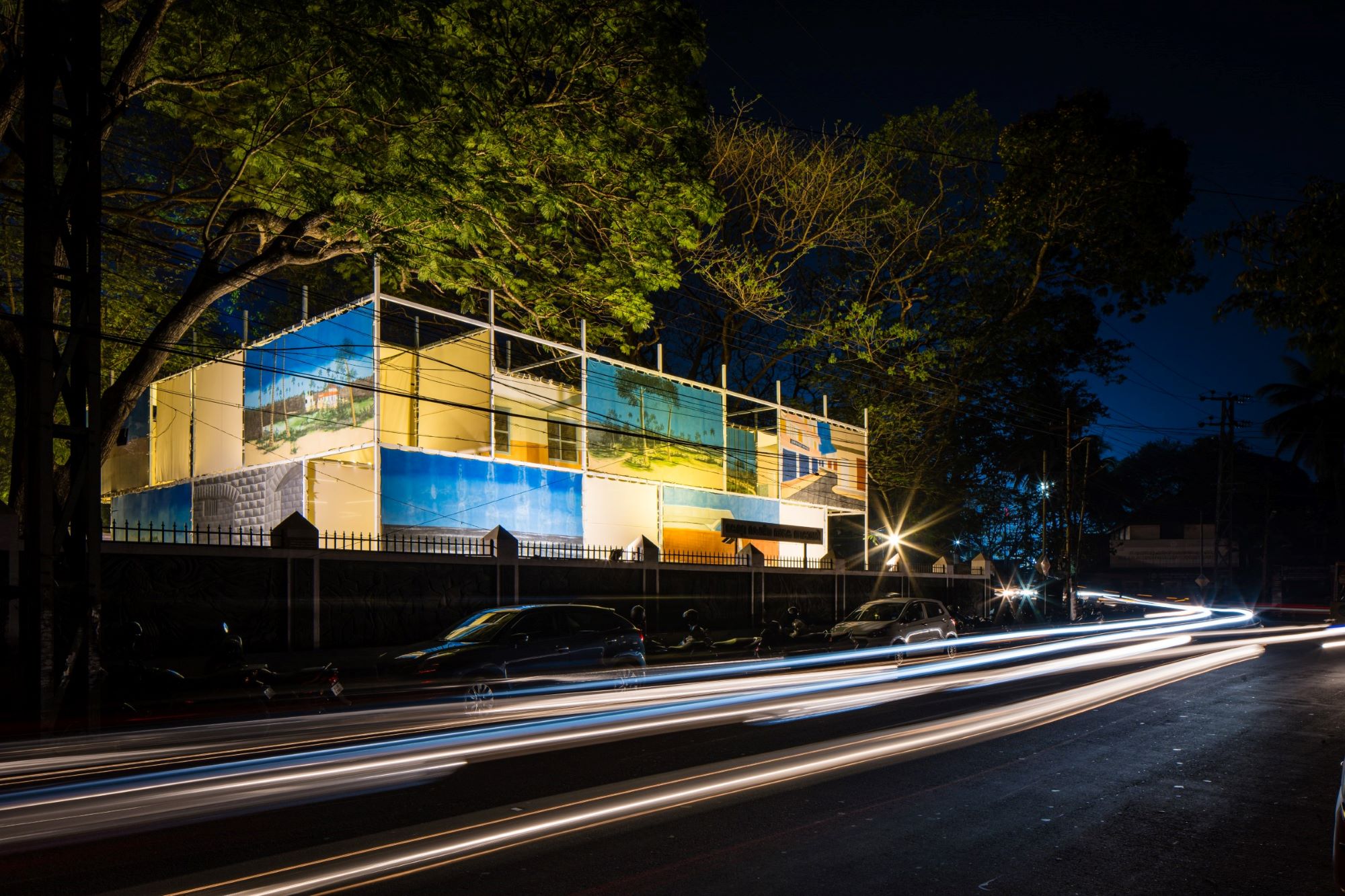Many coastal areas around the world are facing an immense dilemma. How do you deal with densification and increase in population in these areas considering the reality of rising sea levels? Coastal areas are however some of the most desirable places to live and work. In fact they are often attractive from a perspective of livelihood or because of its advantageous environmental conditions. It is therefore important to consider when construction activity does have to take place, it builds in resilience to an uncertain future. Moreover, it should employ building methods and use materials that have a minimal impact on their fragile ecosystems.
The site of the Mumbai Artist Retreat on the other side of the Mumbai Bay is typical in that respect. Since it is relatively difficult to get to, it still has a rural, agricultural character. More so in contrast to the rest of Mumbai it still has somewhat of a shoreline to speak of. Here, the Mumbai Artist Retreat intends to become a place where artists can work in a spacious, natural environment. A place that is away from the heavy physical and psychological demands of the global metropole. However, with the skyline of Mumbai across the bay, it still feels connected with the city.
Site Planning
The site is a low-lying coconut palm plantation located near a beach. Because of a decreasing ground water table, it suffers from saline ground water in the summer months. In order to replenish the ground water table with sweet water, a water harvesting pond in the middle of the site recharges the ground water table. In addition, the pond attracts significant amount of fish and bird life.
Across the length of the property, three zones define the programming of the site: the temporary residential zone, the workspace zone and the residential zone for long term accommodation. The program proposes a series of temporary structures to accommodate these activities.
Lightweight and Nimble
Considering the low soil bearing capacity and occasional flooding on the site, a nimble lightweight steel structure lifts the building off the ground. In order to further reduce the disturbance of the site during construction, the construction processes employed off site manufacturing. Therefore all the joints between the various steel components are designed as nut and bolt connections. The columns rest on stone boulders sourced from another construction project in the vicinity. A steel rod anchors the columns into a chiselled depression in the basalt boulders. This method of construction offers the option to reassemble the building on higher ground if desired.
The Mumbai Artist Retreat is conceptualised as a community space. It is an art lab of sorts, that aims to bring together art, ecology and society. It will bring people from diverse backgrounds together to engage in various forms of artistic expression in a creative and critical way. Therefore the space will reflect the intention of ‘coming together’. Furthermore, it aims to inspire reflection, quietude, creativeness, and belonging. A space where people can engage and immerse in nature and within themselves.
Tropical Shed
The Artist workshop is a 12m x 9m “tropical shed” with two roofs that are each six meter high. Two skylights chop off the pyramid shaped roofs on the top. By shifting the roofs away from each other asymmetrically, they define the two spaces below from an experimental perspective. A store room with screen printing equipment creates an additional loft with a workspace on top of it.
While the stilts, columns and beams are made in galvanised steel, the roof structure is built of bamboo V-shaped beams. Indian bamboo often suffers from irregular shapes and diameters. In order to avoid the natural irregularity of the bamboo from becoming distractive, the layout of the rafters follows a zig-zag pattern. However, it also increases the strength of the structural frame. While the framework is exposed from the inside, on the exterior a lightweight roofing of cement sheets cover the bamboo framework.
A solar skylight on the top of the roof generates power and pulls up hot air from the space below. These solar panels are integrated in such a way that they their technological character does not overpower the design. In addition, this skylight is openable and therefore encourages a natural flow of air across the workshops.
Resilience
Flexibility is an important criteria for a workshop space without a fixed programming. Therefore, movable wall panels can connect to each modular bay of columns, allowing the spaces to be modified. These timber slat panels keep out rain and direct sunlight where it is not desired.
Depending on the requirement, the Artists workshop can be used as a single large workshop, multiple simultaneous workshops or an exhibition space. Along with the flexible construction system and the flexible arrangement of spaces, the workshop is a future ready building that can adapt to the fluidity of artistic programming and the uncertainties of its terrain.
Drawings –
Project Data
Project Name Mumbai Artist Retreat
Location Alibag, India
Year 2019
Type Cultural, Landscape, Educational
Themes Sustainability, Context, Bamboo Roof, Solar Energy, Typology
Status Under Construction
Design Team Shefali Balwani + Robert Verrijt, Sakshi Minocha,
Neethi Dorairaju, Shivani Mehta
Size 150 sq.m.
Program Artist Retreat


